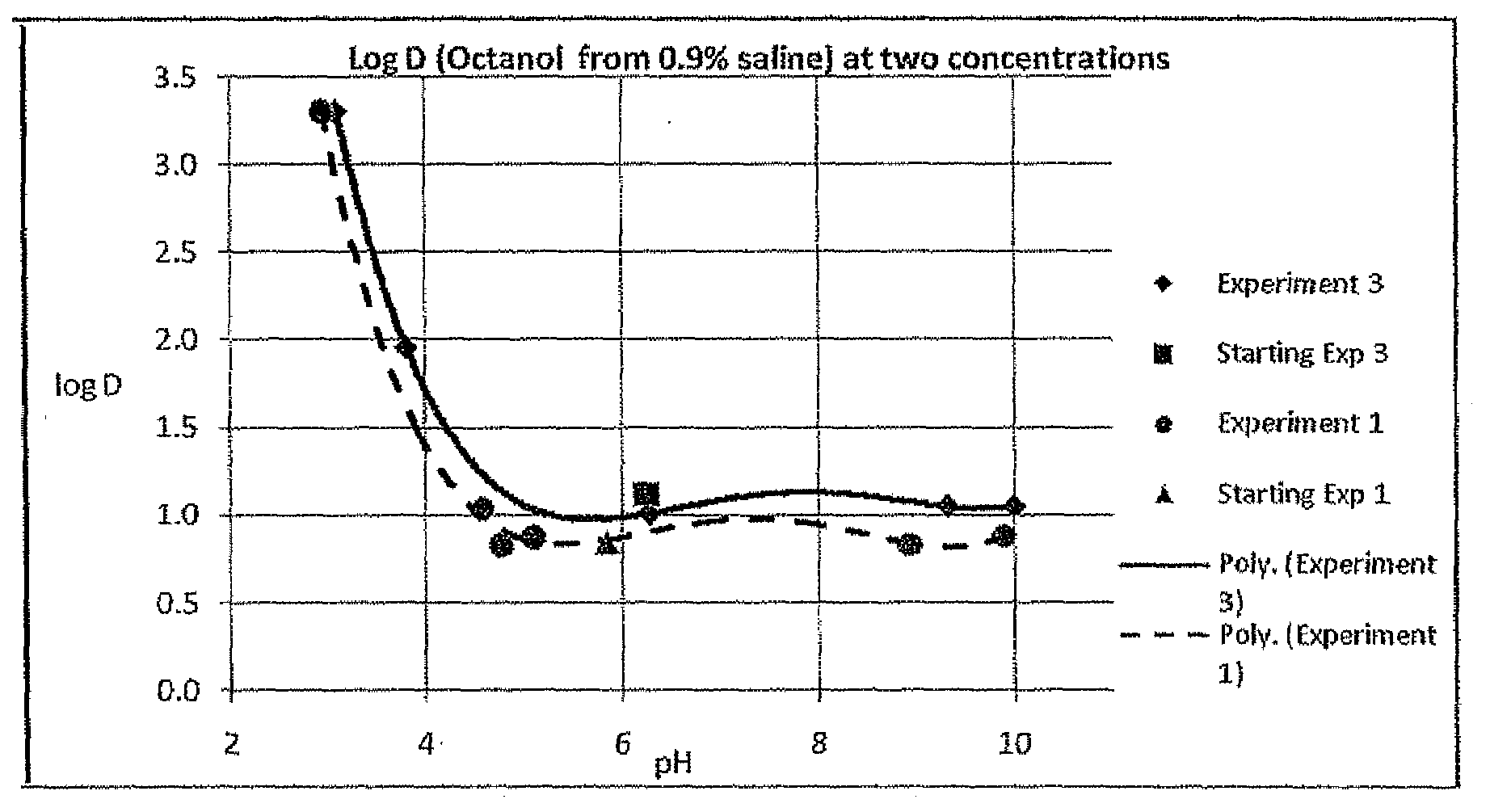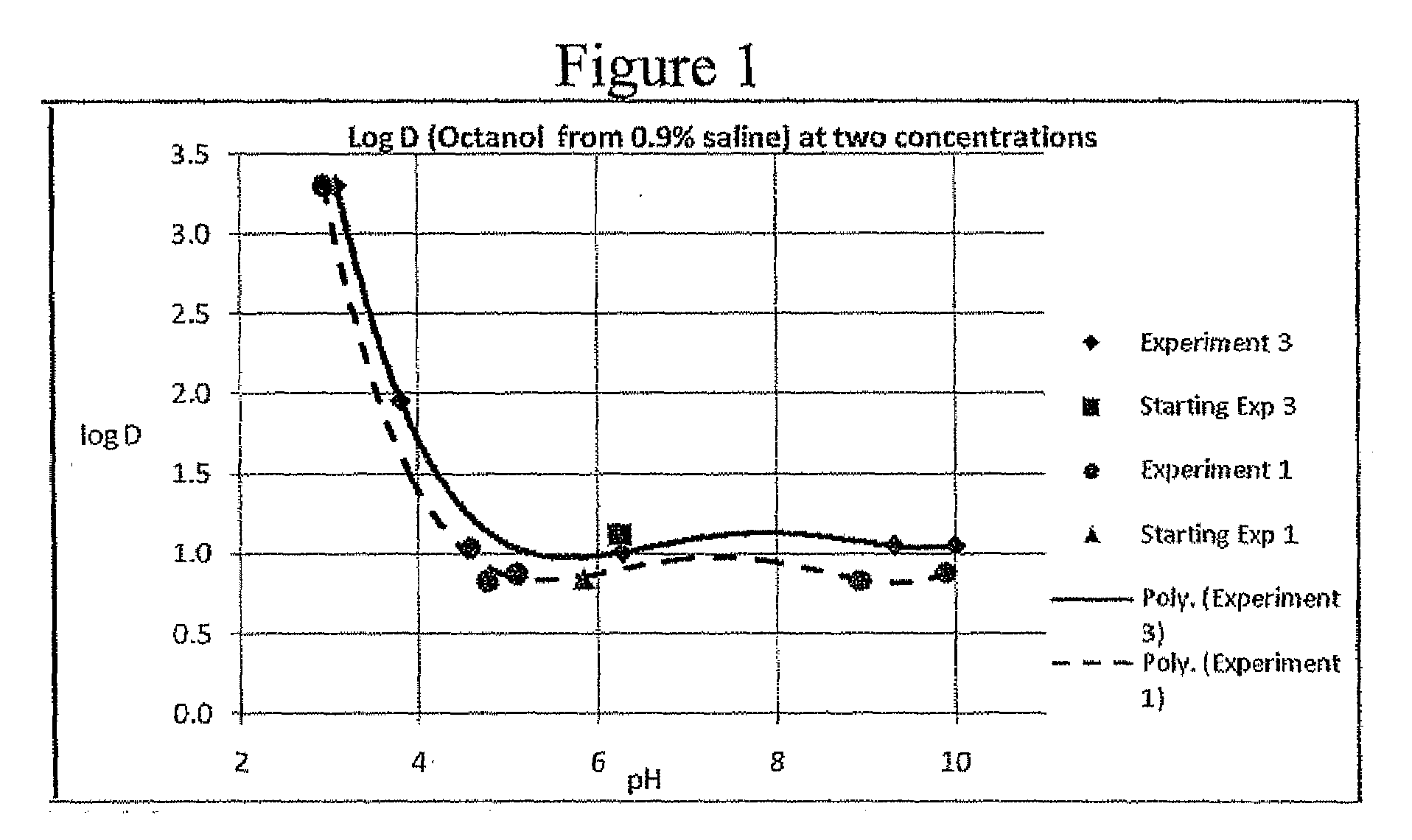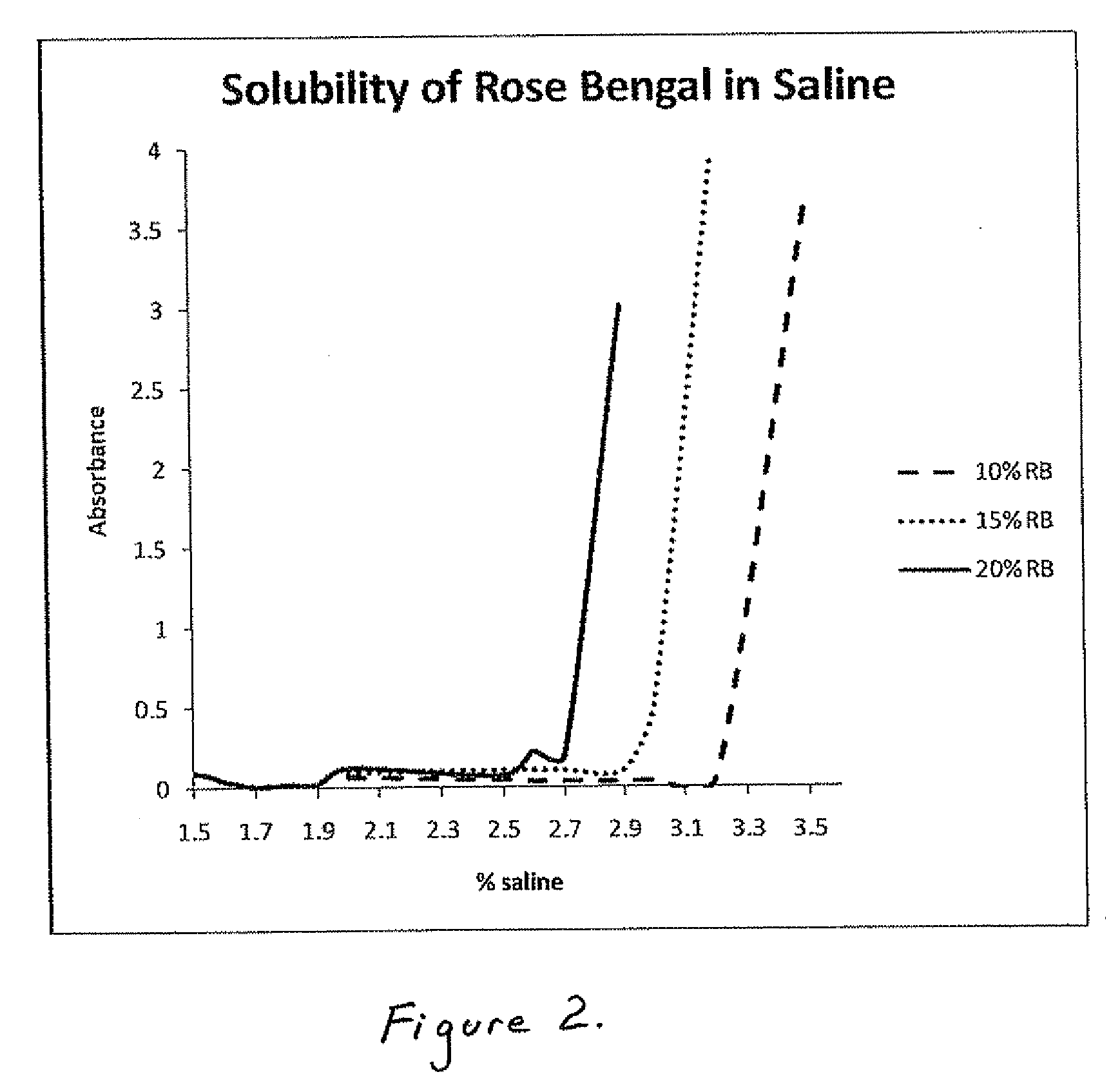Method of treatment of cancer
a cancer and cancer technology, applied in the field of cancer treatment, can solve the problems of a lifetime risk, a much higher risk of excision at this stage, and a less favorable prognosis, so as to maximize the therapeutic effect of the medicament, reduce the potential for deleterious effects elsewhere, and increase the osmolality of the vehicle
- Summary
- Abstract
- Description
- Claims
- Application Information
AI Technical Summary
Benefits of technology
Problems solved by technology
Method used
Image
Examples
Embodiment Construction
1. Partitioning Coefficient Studies—Effect of Electrolyte Concentration
[0047]The partitioning coefficients of Rose Bengal (RB) were determined by partitioning a solution of 0.5 mg / mL Rose Bengal in 0%, 0.5%, 1.5% and 2.5% saline with 1-octanol. After mixing, the agent was allowed to partition for approximately 1 day. Based on absorbance measurements at 550 nm for the aqueous phase and 564 nm for the organic phase, the percentage of agent in each phase was obtained. The results are shown in Table 1 below:
TABLE 1Partitioning coefficientSaline solution %% Partitioning in Octanol(Kp)0.00%75.79 ± 1.75 3.14 ± 0.290.50%95.13 ± 1.4320.84 ± 6.770.90%98.52 ± 0.2668.17 ± 4.431.50%97.77 ± 0.2544.25 ± 5.522.50%99.35 ± 0.28 215.12 ± 105.22
[0048]It may be seen that with increasing saline content partitioning into octanol generally increased gradually, and increased dramatically above 1.5%.
2. Partitioning Coefficient Studies—Effect of pH
[0049]The partition coefficient of RB was assessed over a rang...
PUM
 Login to View More
Login to View More Abstract
Description
Claims
Application Information
 Login to View More
Login to View More - R&D
- Intellectual Property
- Life Sciences
- Materials
- Tech Scout
- Unparalleled Data Quality
- Higher Quality Content
- 60% Fewer Hallucinations
Browse by: Latest US Patents, China's latest patents, Technical Efficacy Thesaurus, Application Domain, Technology Topic, Popular Technical Reports.
© 2025 PatSnap. All rights reserved.Legal|Privacy policy|Modern Slavery Act Transparency Statement|Sitemap|About US| Contact US: help@patsnap.com



